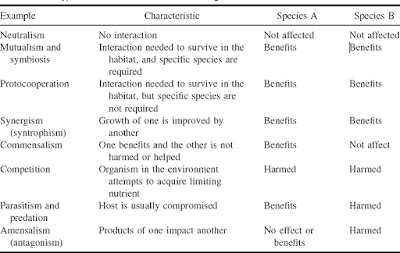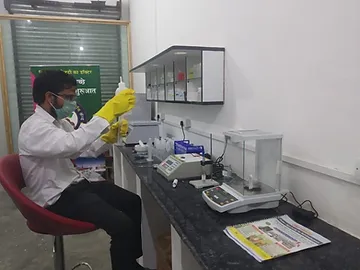Microbial Interations

Biological Interactions With the development of microbial communities, the demand for nutrients and space also increases. As a result, there has been a development of different strategies to enable microorganisms to persist in an environment. Cell–cell interactions may produce cooperative effects where one or more individuals benefit, or competition between the cells may occur with an adverse effect on one or more species in the environment. The nature and magnitude of interaction will depend on the types of microorganism present as well as the abundance of the microorganisms and types of sensory systems of the individual organisms. Classification of microbial interactions In addressing microbe–microbe interactions, it is important to determine whether the interaction is between cells of different genera or within the same species. Various types of interaction of a microorganism with another microorganism and sp
